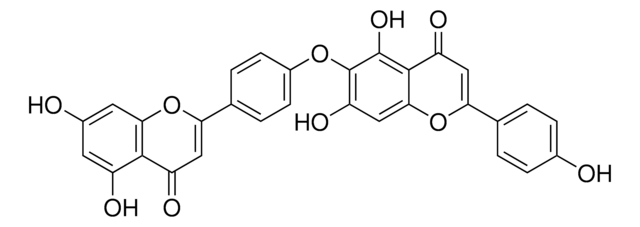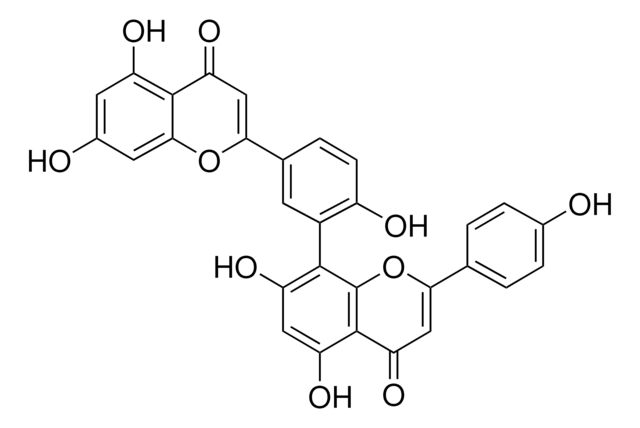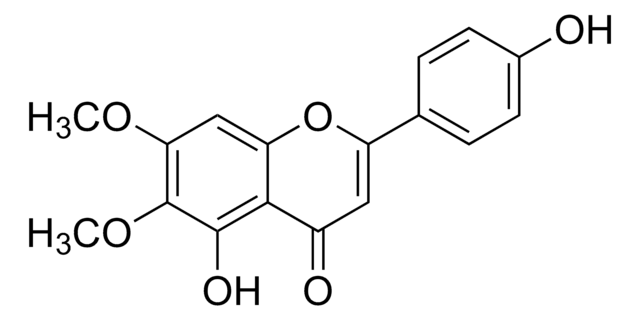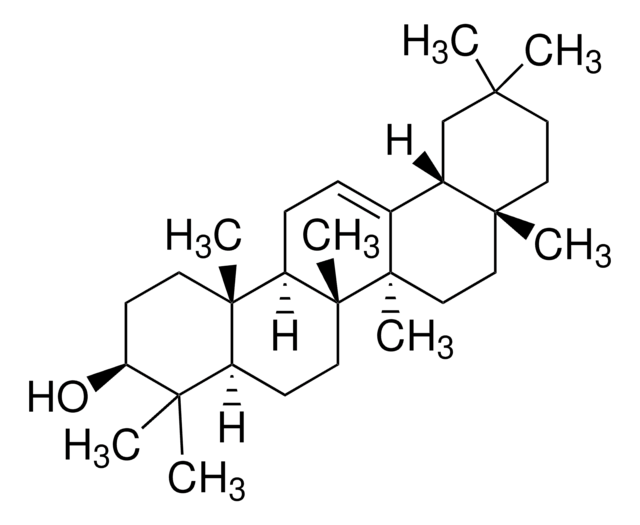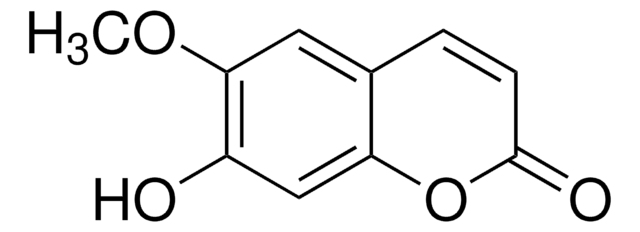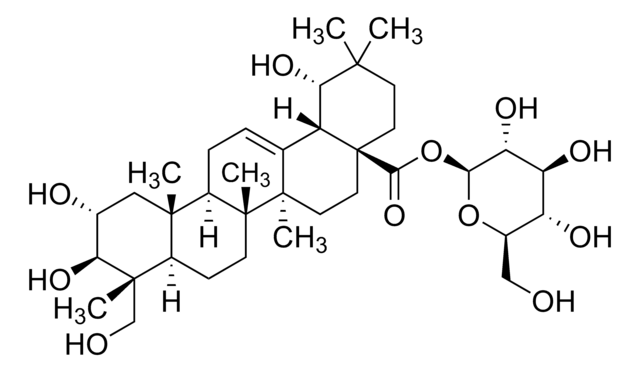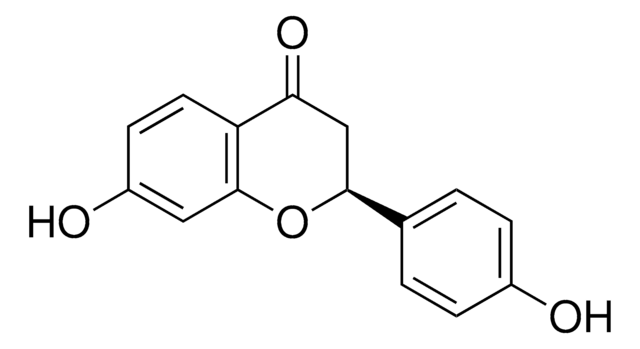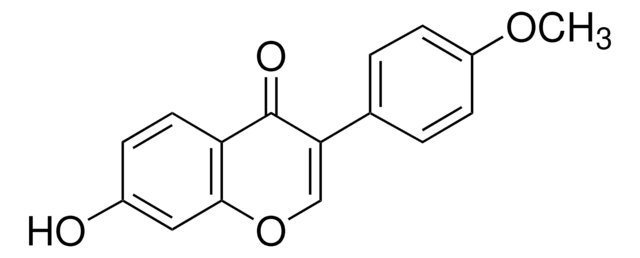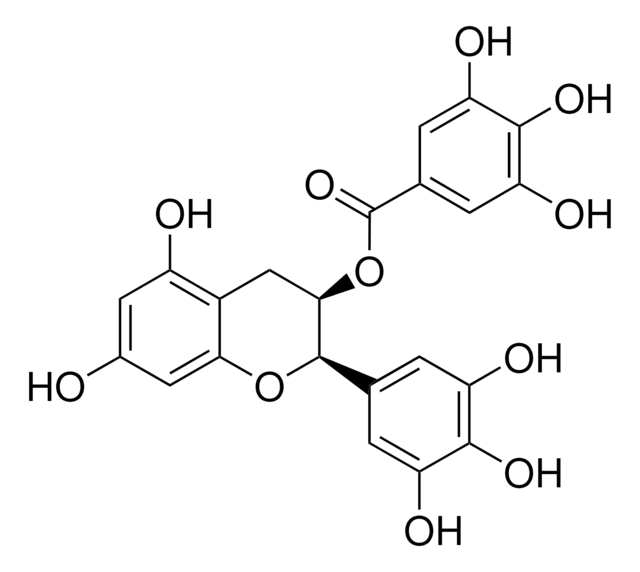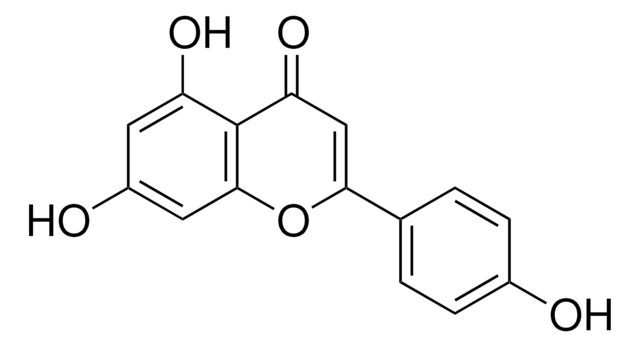SML0582
Hispidulin
≥98% (HPLC)
Sinónimos:
4′,5,7-Trihydroxy-6-methoxyflavone, 5,7-Dihydroxy-2-(4-hydroxyphenyl)-6-methoxy-4H-1-benzopyran-4-one, 6-Methoxyapigenin, 6-Methylscutellarein, Dinatin, Salvitin, Scutellarein 6-methyl ether
About This Item
Productos recomendados
assay
≥98% (HPLC)
form
powder
storage condition
desiccated
color
white to beige
solubility
DMSO: 20 mg/mL, clear
storage temp.
−20°C
SMILES string
OC1=C(OC)C(O)=C(C(C=C(C2=CC=C(O)C=C2)O3)=O)C3=C1
InChI
1S/C16H12O6/c1-21-16-11(19)7-13-14(15(16)20)10(18)6-12(22-13)8-2-4-9(17)5-3-8/h2-7,17,19-20H,1H3
InChI key
IHFBPDAQLQOCBX-UHFFFAOYSA-N
¿Está buscando productos similares? Visita Guía de comparación de productos
Application
- in high-performance liquid chromatography (HPLC) for quantification of Clerodendrum petasites flavonoids
- in liquid chromatography/electrospray ionization mass spectrometry (LC/ESI-MS) analysis
- in reverse-phase high-performance liquid chromatography with a diode-array detector (HPLC-DAD) and high-performance thin-layer chromatography (HPTLC)
Biochem/physiol Actions
Features and Benefits
Storage Class
11 - Combustible Solids
wgk_germany
WGK 3
flash_point_f
Not applicable
flash_point_c
Not applicable
Elija entre una de las versiones más recientes:
Certificados de análisis (COA)
¿No ve la versión correcta?
Si necesita una versión concreta, puede buscar un certificado específico por el número de lote.
¿Ya tiene este producto?
Encuentre la documentación para los productos que ha comprado recientemente en la Biblioteca de documentos.
Los clientes también vieron
Contenido relacionado
Discover Bioactive Small Molecules for Kinase Phosphatase Biology
Nuestro equipo de científicos tiene experiencia en todas las áreas de investigación: Ciencias de la vida, Ciencia de los materiales, Síntesis química, Cromatografía, Analítica y muchas otras.
Póngase en contacto con el Servicio técnico